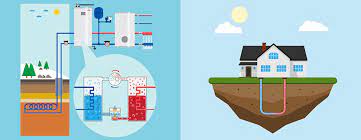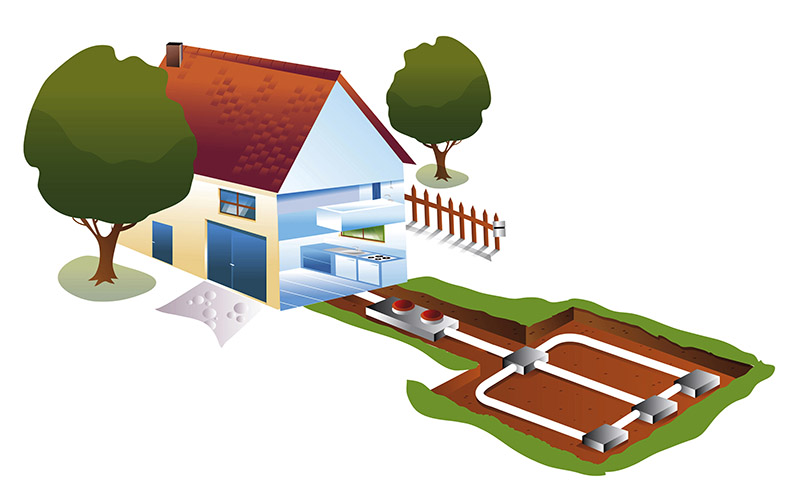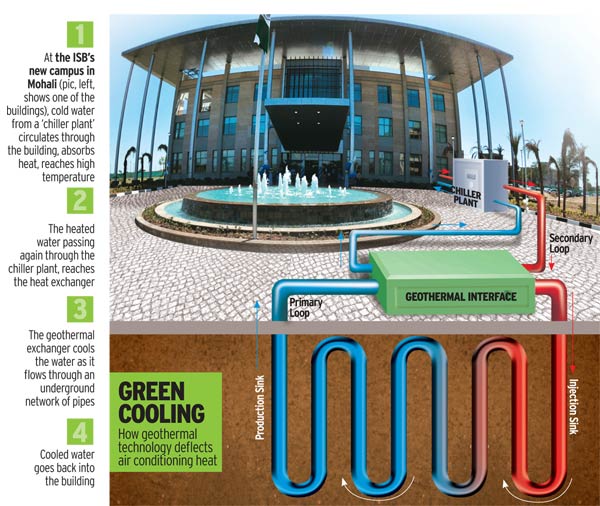Introduction:
As the world grapples with the urgent need to transition towards renewable energy sources, geothermal energy emerges as a promising solution for sustainable heating, ventilation, and air conditioning (HVAC) systems in buildings. Unlike traditional HVAC systems that rely on fossil fuels or electricity, geothermal HVAC systems utilize the earth’s natural heat to provide efficient and environmentally friendly heating and cooling. In this blog, we explore the benefits, technology, and implementation of geothermal energy in building HVAC systems.
Understanding Geothermal Energy in Building HVAC Systems:
Geothermal HVAC systems utilize the relatively stable temperatures found beneath the earth’s surface to heat and cool buildings. By circulating a fluid through a series of underground pipes, heat exchange occurs, transferring thermal energy to or from the building as needed. This process eliminates the need for conventional heating and cooling equipment, resulting in lower energy consumption, reduced greenhouse gas emissions, and increased energy independence.
Benefits of Geothermal HVAC Systems:
1. Energy Efficiency: Geothermal HVAC systems can achieve high levels of energy efficiency, typically exceeding 300% efficiency compared to conventional HVAC systems.
2. Cost Savings: Although the upfront installation costs may be higher, geothermal systems offer long-term savings on energy bills due to reduced operational costs and maintenance requirements.
3. Environmental Sustainability: By harnessing renewable energy from the earth’s heat, geothermal HVAC systems significantly reduce carbon emissions and reliance on fossil fuels, mitigating the impact of climate change.
4. Durability and Reliability: Geothermal systems have fewer moving parts and components exposed to harsh weather conditions, resulting in greater durability and reliability over their lifespan.
5. Comfort and Control: Geothermal HVAC systems provide consistent and comfortable indoor temperatures year-round, with the ability to adjust heating and cooling settings as needed.
Technology behind Geothermal HVAC Systems:
1. Ground Loop Systems: Geothermal HVAC systems utilize ground loop systems, which consist of a network of underground pipes filled with a heat transfer fluid, typically water or a mixture of water and antifreeze.
2. Heat Pumps: Heat pumps are used to extract heat from the ground during the heating season and reject heat to the ground during the cooling season. These pumps can be either water-source or air-source heat pumps, depending on the type of loop system.
3. Distribution Systems: Geothermal HVAC systems can be configured with various distribution systems, including forced air, radiant floor heating, or hydronic heating, to distribute conditioned air or water throughout the building.
Implementation of Geothermal HVAC Systems:
1. Site Assessment: Conduct a site assessment to determine the feasibility of installing a geothermal HVAC system, considering factors such as soil conditions, available space, and heating and cooling loads.
2. System Design: Work with experienced engineers and designers to develop a customized geothermal HVAC system design tailored to the building’s specific requirements and constraints.
3. Installation: Hire qualified contractors to install the ground loop system, heat pumps, and distribution systems according to industry best practices and manufacturer guidelines.
4. Commissioning and Testing: Commission the geothermal HVAC system to ensure proper operation and performance, conducting tests to verify efficiency, airflow, and temperature control.
5. Ongoing Maintenance: Schedule regular maintenance and inspections to keep the geothermal HVAC system running smoothly, including flushing the ground loop system, checking fluid levels, and replacing filters as needed.
Conclusion:
Geothermal energy offers a sustainable and efficient solution for heating and cooling buildings, providing significant environmental, economic, and operational benefits. By harnessing the earth’s natural heat, geothermal HVAC systems reduce energy consumption, lower greenhouse gas emissions, and enhance indoor comfort and air quality. As the demand for renewable energy solutions continues to rise, integrating geothermal HVAC systems into building designs becomes increasingly essential for achieving energy






